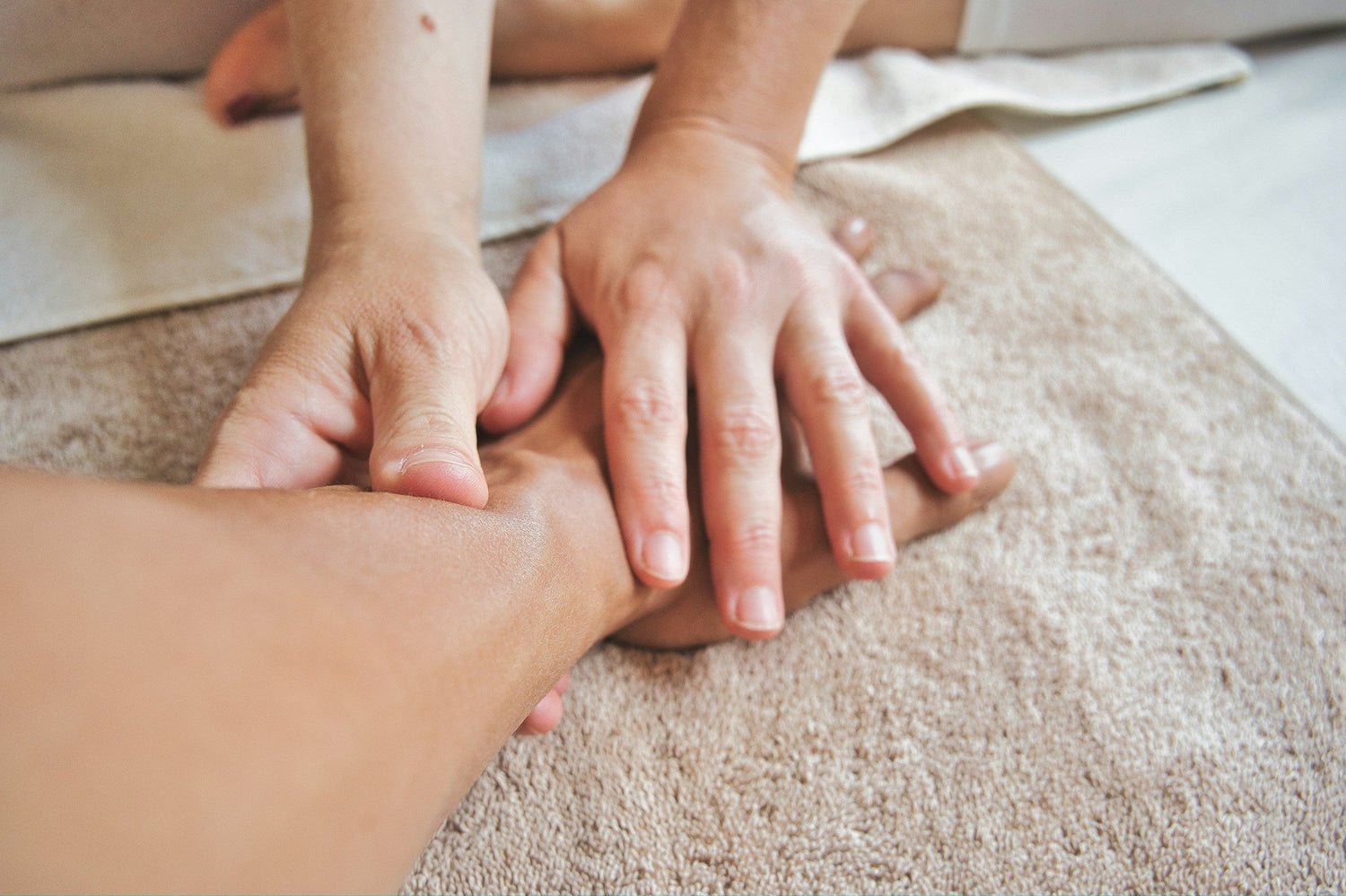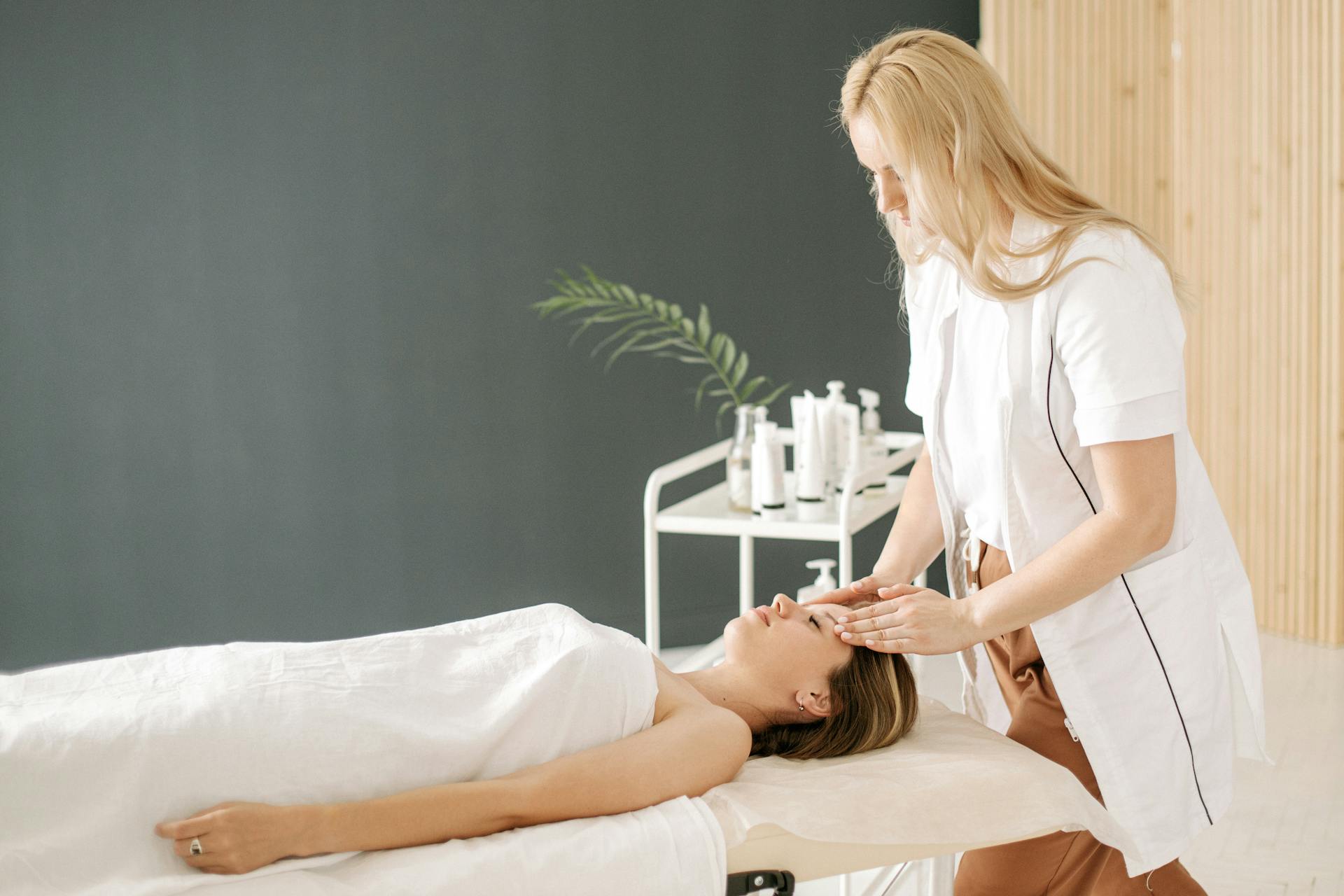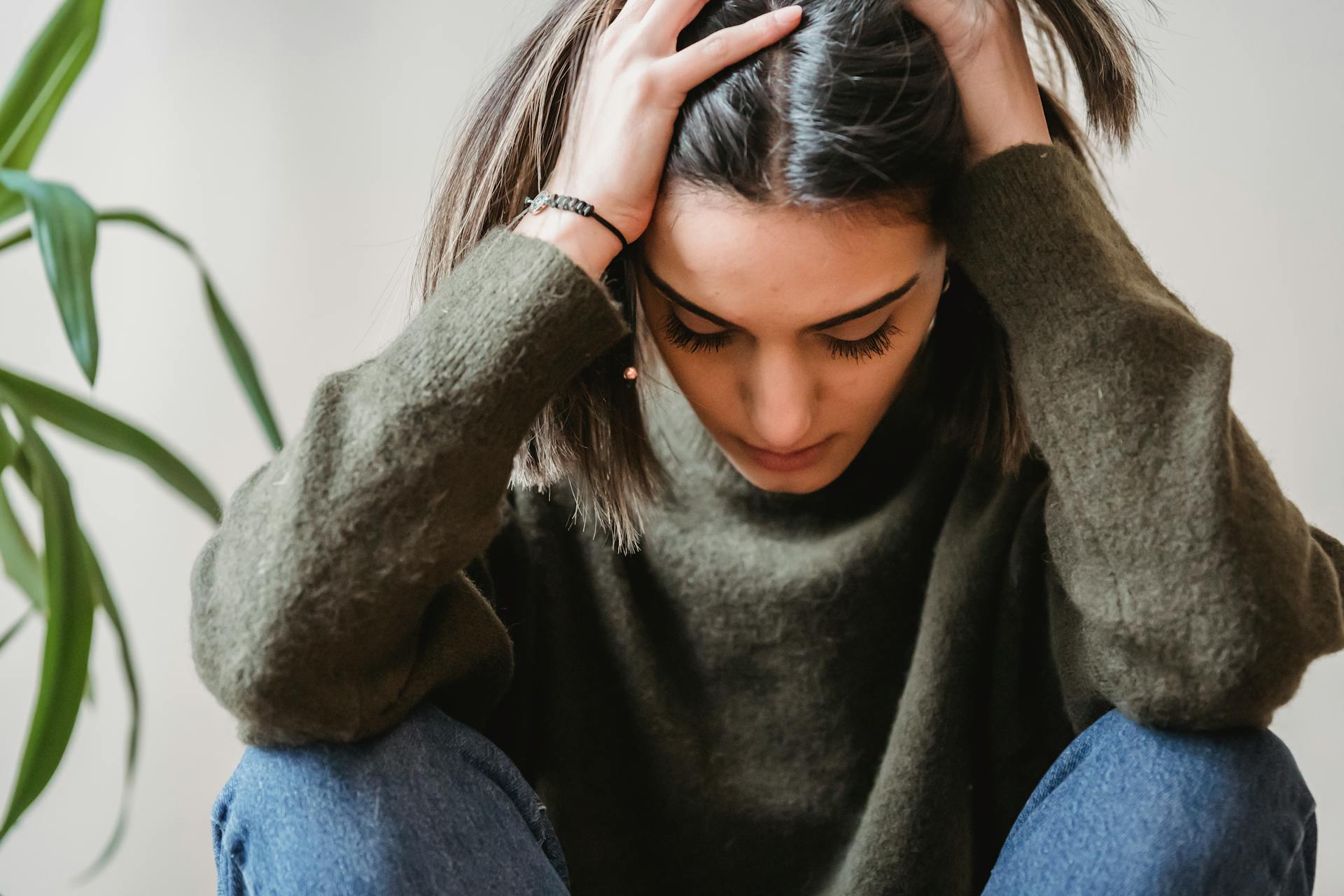Lorsque vous êtes stressé au travail, dans vos relations ou pour votre santé, l'anxiété est indissociable de votre stress. L'anxiété occasionnelle fait partie intégrante de la vie quotidienne ; c'est la façon naturelle dont notre corps réagit aux problèmes ou aux dangers. Mais lorsque l'anxiété est constante, elle peut se manifester par un trouble anxieux, un trouble qui touche 31,3 % des adultes américains à un moment ou à un autre de leur vie.
Que vous souffriez de crises d'anxiété occasionnelles ou d'inquiétudes persistantes, vous vous demandez peut-être : « Le massage peut-il soulager l'anxiété ? » Voici ce qu'il faut savoir sur les bienfaits potentiels du massage contre l'anxiété, ainsi que les recherches et les étapes à suivre.
Les bienfaits du massage pour soulager l'anxiété et le stress
Le massage utilise le toucher, le pétrissage ou les vibrations pour détendre le corps. Si vous vous êtes déjà endormi pendant un massage, vous savez à quel point il peut être puissant.
Mais le massage peut-il soulager l'anxiété ? Pour beaucoup, oui, et peut-être grâce à quelques bienfaits majeurs :
La réponse de relaxation
Le massage peut stimuler le système nerveux parasympathique, entraînant une diminution du stress et une relaxation physique accrue. À mesure que la tension diminue, vous pouvez même ressentir une baisse temporaire de votre tension artérielle, signe de cette réaction de relaxation.
D'autres effets de la relaxation incluent une respiration plus lente et un rythme cardiaque plus calme, deux éléments qui peuvent contribuer à atténuer les sensations physiques d'anxiété. Si vous recevez un massage en personne avec un thérapeute ou un partenaire, le pouvoir du toucher peut amplifier ces bienfaits. Des recherches antérieures ont montré que le toucher peut être bénéfique pour :
- Soulager les sentiments de dépression et d'anxiété
- Améliorer le bien-être mental
- Soulager la douleur physique
Tension musculaire
Lorsque vous êtes dans un état d'anxiété ou de peur intense, votre corps se tend en prévision du danger. Mais à long terme, une tension excessive peut entraîner des douleurs chroniques, notamment dans le haut du dos, les trapèzes et le cou.
La bonne nouvelle, c'est que le massage peut aider à étirer et détendre les muscles « bloqués » par la tension. La thérapie des points gâchettes, un massage plus profond et plus ciblé, peut également contribuer à dénouer les nœuds musculaires qui se sont formés au fil du temps.
Sommeil et insomnie
Si vous souffrez souvent d'anxiété, vous savez peut-être qu'elle peut nuire à une bonne nuit de sommeil. En effet, l'insomnie, ou l'incapacité à s'endormir, est souvent directement liée à l'anxiété et au stress. Heureusement, comme le massage peut aider votre corps à se détendre, il peut également vous aider à vous endormir et à rester endormi .
C'est un autre effet secondaire de la relaxation, et c'est pourquoi il est si fréquent de s'endormir pendant un massage. Mais au-delà des effets physiques, il y a aussi une composante mentale. Parce que le massage peut vous aider à vous concentrer sur l'instant présent, il peut vous aider à oublier vos soucis et à vous endormir plus confortablement.
Soulagement de la douleur
La douleur et l'anxiété peuvent souvent survenir simultanément, et lorsqu'elles le font, elles peuvent agir de manière cyclique et s'exacerber mutuellement. Par exemple, si vous souffrez de douleurs chroniques, vous savez peut-être qu'elles peuvent aggraver l'anxiété. À l'inverse, ressentir de l'anxiété pendant que vous souffrez peut aggraver votre douleur.
Heureusement, le massage peut soulager de nombreux types de douleurs, qu'il s'agisse de douleurs dorsales liées à la tension, de tendinites ou de douleurs généralisées liées à certaines affections. Il y parvient en activant les récepteurs de pression musculaires, ce qui peut contribuer à calmer les signaux de douleur pour un soulagement immédiat.
Recherche sur le massage et l'anxiété
Globalement, le massage semble avoir le potentiel de soulager l'anxiété. C'est pourquoi, depuis plusieurs décennies, les chercheurs étudient ses effets sur des groupes spécifiques et leurs symptômes. De nombreuses études se sont révélées prometteuses jusqu'à présent, à tel point que la position officielle de l'American Massage Therapy Association (AMTA) est que le massage peut « contribuer à réduire les symptômes de l'anxiété ».
Dans cet esprit, voici quelques études intéressantes sur le massage et l’anxiété :
Anxiété périopératoire (liée à la chirurgie)
Si vous avez déjà subi une intervention chirurgicale, vous avez peut-être ressenti beaucoup d'anxiété les jours précédant l'intervention. Dans une revue de la littérature de 2020 , des chercheurs ont examiné 25 essais portant sur 2 494 participants afin de déterminer si le massage pouvait soulager l'anxiété liée à l'intervention. Ils ont constaté que le massage atténuait l'anxiété chez un large éventail de patients subissant différents types d'interventions.
De plus, les résultats ont montré que les massages pratiqués par des thérapeutes professionnels et non professionnels étaient tous deux efficaces. L'étude note également que les massages d'une durée de 10 à 20 minutes semblaient donner les meilleurs résultats.
trouble d'anxiété généralisée
Dans un petit essai randomisé de 2010 , des chercheurs ont comparé trois types de thérapies de relaxation auprès de 68 personnes atteintes de trouble d'anxiété généralisée (TAG). Ces thérapies comprenaient :
- Massage thérapeutique
- Thermothérapie (ou thermothérapie)
- Thérapie en chambre relaxante
Chaque groupe a bénéficié de dix séances de la thérapie qui lui avait été attribuée, réparties sur 12 semaines. Il est intéressant de noter que les résultats ont montré que les trois interventions ont entraîné des améliorations similaires, probablement grâce à la réponse naturelle de relaxation du corps.
Maux de dos et anxiété
Les maux de dos et l'anxiété sont très fréquents et se manifestent souvent ensemble. Dans une étude de 2007 , des chercheurs ont comparé le massage à la sophrologie pour évaluer leur impact sur la lombalgie. Les participants du groupe de massage ont chacun reçu un massage de 30 minutes deux fois par semaine pendant cinq semaines.
À la fin de l’étude, le groupe de massage a signalé moins de douleur, d’anxiété et de dépression, ainsi qu’un meilleur sommeil, par rapport au groupe de relaxation.
Acupression pour l'anxiété
Si vous avez déjà appuyé sur un point de pression du pied ou de la main pour soulager un mal de tête, vous connaissez peut-être l'acupression. Cette pratique chinoise ancestrale utilise les mêmes principes que l'acupuncture : les praticiens se concentrent sur la stimulation de points énergétiques dans tout le corps pour soulager les symptômes et favoriser la santé. Dans une revue de 27 études réalisée en 2022 , des chercheurs ont constaté que la pratique de l'acupression semblait améliorer le niveau d'anxiété des patients.
Quel est le meilleur type de massage pour l’anxiété ?

Le meilleur type de massage pour l'anxiété peut varier d'une personne à l'autre, mais certaines des options les plus populaires incluent :
Massage suédois
Le massage suédois est un excellent choix pour les personnes stressées et anxieuses, car il consiste en des mouvements légers et relaxants. Il vise à revitaliser et détendre le corps, à améliorer la circulation et à soulager la douleur. Il peut également impliquer des techniques pour soutenir le système lymphatique .
Grâce à sa pression si douce, il constitue le choix idéal pour ceux qui recherchent avant tout la relaxation. Il évite également les sensations « douloureuses » que l'on peut ressentir avec un massage par pression plus profonde. Il allie glissements légers, pétrissages et tapotements pour favoriser le bien-être général.
Massage d'aromathérapie
Le massage aromathérapeutique peut être pratiqué avec une grande variété de techniques, que vous préfériez une pression légère ou un massage plus profond. La seule différence réside dans l'ajout d'huiles essentielles. Il est donc facile d'intégrer l'aromathérapie à un massage à domicile, et la plupart des cliniques de massage la proposent également.
Alors, pourquoi est-ce un bon choix pour soulager l'anxiété ? En résumé, certains parfums peuvent apaiser le système nerveux. Ils peuvent alors agir en synergie avec le massage pour approfondir la relaxation ressentie lors de la séance. Parmi les meilleurs parfums pour soulager l'anxiété, on trouve :
- Lavande
- Camomille
- Ylang-ylang
- Rose
- Citron
Auto-massage
L'automassage peut être un excellent outil, même s'il n'est pas forcément meilleur qu'un massage professionnel. Il présente cependant un avantage sur le massage professionnel : il peut être pratiqué à tout moment, même si vous avez besoin d'un peu de détente.
Vous pouvez essayer cela simplement, par exemple en vous massant les pieds en ciblant les points de pression pour soulager le stress et l'anxiété. Vous pouvez aussi investir dans un rouleau en mousse ou un appareil de massage à domicile pour faciliter votre auto-massage quotidien.
Auto-massage des tempes, du cou et des épaules pour l'anxiété
Si vous n'avez que vos mains à la maison, vous pouvez utiliser cet automassage simple du haut du corps dès que vous avez besoin de vous détendre. Pour commencer, installez-vous confortablement et adoptez une posture détendue et soutenue.
Ensuite, suivez simplement ces étapes :
- Inspirez profondément et massez les côtés de votre tête et votre cuir chevelu avec vos deux mains en mouvements circulaires. Répétez l'opération pendant 1 à 2 minutes.
- Ensuite, utilisez quelques doigts de chaque main pour masser les tempes en mouvements circulaires. Répétez l'opération pendant une minute supplémentaire.
- Ensuite, descendez jusqu'au muscle masséter. (Il s'agit du gros muscle situé juste en dessous de votre pommette qui contrôle votre mâchoire.) Massez en mouvements circulaires pendant une minute supplémentaire.
- Descendez ensuite vers le cou. Massez délicatement de chaque côté de la nuque, en effectuant des mouvements de balayage et en exerçant une légère pression, en commençant juste sous le crâne. Répétez 10 fois.
- Enfin, prenez le temps de masser chaque muscle trapèze. Ce muscle du dos, situé entre le cou et l'épaule, peut transmettre beaucoup de tensions liées à l'anxiété. Pincez et pétrissez chaque muscle trapèze avec votre pouce et vos doigts pendant 60 secondes.
Auto-massage des pieds avec point de pression
L'automassage des pieds peut être un autre outil apaisant à essayer, non seulement pour soulager l'anxiété, mais aussi pour prendre soin d'une partie du corps souvent négligée. Ce massage ne prend que cinq minutes pour dissiper les tensions des pieds tout en ciblant des points de pression spécifiques pour soulager l'anxiété :
- Commencez par croiser un pied sur votre genou. Vous pouvez également appliquer une goutte d'huile ou de lotion sur le pied pour réduire les frottements.
- Commencez par faire glisser vos deux pouces le long du pied. Répétez l'exercice pendant deux minutes.
- Ensuite, utilisez vos articulations pour répéter le mouvement de glissement pendant une minute.
- Ensuite, serrez et tirez chacun de vos orteils pendant quelques secondes.
- Enfin, appuyez sur le point de pression de la grande poussée pour soulager encore plus la tension. Ce point de pression se situe sur le dessus de votre pied, à environ 2,5 à 5 cm de profondeur, entre le gros orteil et le majeur. Maintenez ce point de pression enfoncé pendant 4 à 5 secondes.
Meilleures pratiques de massage pour l'anxiété
Que vous optiez pour un massage professionnel ou un auto-massage à domicile, voici quelques conseils et bonnes pratiques à garder à l’esprit :
- Pratiquez la pleine conscience ou la respiration profonde pendant votre massage. Ces deux techniques peuvent agir en synergie pour aider votre corps et votre esprit à atteindre un état de calme.
- Utilisez régulièrement le massage . En intégrant le massage à vos soins personnels, vous aurez une option supplémentaire pour gérer votre anxiété. De plus, les effets du massage sont de courte durée ; une utilisation régulière peut donc vous aider à en récolter les bienfaits à long terme.
- Soyez attentif à la réaction de votre corps . C'est particulièrement important si vous essayez la pression profonde pour la première fois ou si vous ressentez une douleur. Être attentif à la réaction de votre corps vous permettra de ne pas utiliser de techniques qui aggravent votre douleur ou votre anxiété.
- Essayez différents thérapeutes ou modalités de massage jusqu’à ce que vous trouviez celui qui vous convient le mieux.
- N'oubliez pas de vous hydrater après chaque séance.
- N’ayez pas peur de communiquer vos besoins et vos préoccupations si vous travaillez avec un thérapeute.
Existe-t-il des risques ou des effets secondaires du massage contre l’anxiété ?
Le massage est bénéfique et relaxant pour la plupart des gens, à condition qu'il soit pratiqué correctement. Cependant, certains problèmes de santé peuvent vous empêcher de bénéficier d'un massage (bien que ces problèmes ne soient souvent pas liés à l'anxiété).
En général, il est conseillé de consulter un médecin si vous avez des problèmes de peau ou des blessures. Il est également important d'obtenir son accord si vous souffrez d'une maladie cardiaque, de problèmes rénaux, d'une insuffisance organique, d'ostéoporose ou d'antécédents de caillots sanguins.
Globalement, la santé et les sensibilités de chaque personne sont différentes. Par conséquent, en cas de doute sur un problème de santé ou un médicament que vous prenez, il est toujours préférable de consulter votre médecin avant de commencer.
Obtenir de l'aide pour les troubles anxieux
Le massage peut être un moyen naturel de se calmer lorsque l'anxiété monte. Cependant, il ne s'agit pas d'un traitement ni d'une guérison des troubles anxieux. Si votre anxiété affecte votre quotidien, provoque des symptômes physiques ou vous empêche de fonctionner, il est important de consulter un médecin ou un professionnel de la santé mentale agréé.
Les troubles anxieux peuvent être invalidants, mais la bonne nouvelle est qu'ils sont faciles à traiter avec les bons outils, même s'il faut du temps pour trouver ceux qui vous conviennent le mieux. Les principales options thérapeutiques comprennent généralement :
- Des thérapies comme la thérapie cognitivo-comportementale (TCC), la thérapie par la parole ou la thérapie par exposition
- Médicaments pour traiter les problèmes sous-jacents ou les déséquilibres qui peuvent déclencher l'anxiété
Autres outils et conseils pour gérer l'anxiété
En plus des massages et des traitements prescrits, voici quelques autres outils qui ont démontré leurs effets positifs pour les personnes souffrant d’anxiété :
Exercice
Selon un article de Harvard Health Publishing , des études antérieures ont montré que les personnes anxieuses ont tendance à faire moins d'exercice que les autres. Pourtant, dans ce même article, l'auteur écrit que l'exercice « pourrait être la meilleure solution non médicale dont nous disposons pour traiter et prévenir l'anxiété ».
Cela est probablement dû aux nombreux bienfaits, tant mentaux que physiques, que l'exercice procure à notre corps. Les exercices d'aérobic comme le jogging ou le vélo peuvent être les plus efficaces. Mais si ce n'est pas votre truc, n'importe quel type d'exercice, de l'haltérophilie au yoga, peut également améliorer votre bien-être mental.
Régime alimentaire et nutrition
Au-delà de l'exercice physique, une alimentation saine pourrait également contribuer à réduire l'anxiété. Par exemple, un apport suffisant en minéraux comme le magnésium et le zinc pourrait vous aider à rester naturellement plus calme. Les aliments riches en acides gras oméga-3, comme le saumon ou le thon, pourraient également être bénéfiques.
En plus de ceux-ci, voici quelques autres aliments qui pourraient avoir un impact positif sur votre humeur et votre niveau d’anxiété :
- Les aliments riches en probiotiques comme la choucroute, le yaourt, le kimchi ou le kombucha
- Les aliments riches en vitamine B comme les amandes, les asperges et les œufs
- Des options riches en antioxydants comme des fruits colorés, des baies, des noix et des haricots
- Légumes comme le chou frisé, le chou et l'artichaut
À emporter
Si vous souffrez d'anxiété, vous disposez peut-être déjà de quelques outils de soins personnels pour la gérer. Mais en complément des traitements prescrits, la massothérapie peut être une autre méthode naturelle pour apaiser votre corps, apaiser les tensions et soulager le stress .
Le massage suédois est généralement une bonne option pour débuter avec un massage professionnel. Mais si vous souhaitez intégrer le massage à votre routine quotidienne, vous pouvez utiliser des techniques d'auto-massage comme celles décrites ci-dessus, ou investir dans un outil reconnu par les médecins, comme ceux de MedMassager.
Procurez-vous le MedMassager Body Massager Plus pour commencer ou consultez la gamme complète d'outils pour la maison dès aujourd'hui.



